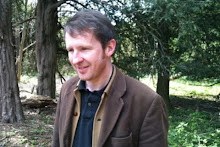Compared to The Midnight Bell, Rope was a strange, stilted thing. It concerned two students of Nietzsche who attempt the 'perfect' murder purely for kicks, and was based around a gimmick: centre stage throughout the play was a trunk containing the victim's body. The story seemed to be based on the case of Leopold and Loeb, two rich, smart American kids who kidnapped and killed 14-year old Bobby Franks. Brandon, the more manipulative killer, is one of the thoroughly heartless types who crop up in most of Hamilton's work - whether it is Netta, the bitchy actress in Hangover Square, or Ralph Ernest Gorse, the clinical anti-hero of a post-war trilogy.
Alfred Hitchcock's 1948 film of Rope is best remembered for being shot in a sequence of eight minute takes. It also played up the Leopold and Loeb link, inferring the killers were gay (Loeb was killed in prison after making advances to another inmate) which was enough to see the film banned in Chicago, Seattle and Memphis. The tension of the script, though, is dissipated by both Hitchcock's experimentation - you can't for a second forget that the takes are v-e-r-y long - and Farley Granger's continuous darting around the screen like a sweaty chicken. His performance couldn't be further from Hamilton's cold, clipped script. The author was unimpressed, describing the film as "sordid and practically meaningless balls."
Gaslight was a different story. By 1938 Hamilton was a confirmed Marxist, and the grisly greed of the evil Gregory, quite happy to spend years driving his wife to madness in order to gain some jewels, reflected his belief that capitalism - accelerated by the rise of the Nazis - was coming to an end. The British film from 1940, directed by Thorold Dickinson is desperately claustrophobic with Gregory (Anton Walbrook) marked out as Bella's (Diana Wynyard) persecutor from the off. Everywhere there is melancholy and menace. "A dirty evening for a stroll, sir" remarks a policeman. "There are a lot of dirty things in London" replies Gregory.
"I don't think so, sir" she replies, with a sly air that Hamilton must have been quite familiar with.
The only novel that made it to the big screen was Fox's 1945 take on Hangover Square. Suffice to say that in place of the novel's alcohol-drenched pre-war paranoia is a period drama about a bunch of fancy Edwardians who live in Hangover Square, Fulham. It really is that crass. A fine, forgotten actor called Laird Cregar (also in This Gun For Hire with Veronica Lake) loved the book and persuaded Fox to make the film only to see it bowdlerised beyond recognition - as George Henry Bone, the principal character, he was probably more embarrassed by the results than even Patrick Hamilton and died of heart failure, aged just 28, before the film was released. All Hangover Square has to recommend it beyond Cregar's browbeaten performance is the quite beautiful Linda Darnell (Rex Harrison's wife in Preston Surges' Unfaithfully Yours) as Netta, and an early Bernard Herrmann score that anticipates his Hitchcock work.
The BBC chose Hamilton's best early work for their 2005 adaptation, Twenty Thousand Streets Under The Sky, a trilogy in which Hamilton captured the whole rootless population of London by focusing on just a few characters, and one setting - The Midnight Bell. Bob and Ella work behind the bar. He is young and handsome, but drinks heavily, and fatally falls for a prostitute called Jenny who slowly tears his life to shreds; Ella, secretly in love with Bob, watches helplessly.
It's hard to fault the settings (recognisably Fitzrovia) or the score (think Pennies From Heaven), though, and the attention to detail in a BBC period drama is something to be treasured after catastrophes like their make-over jobs on Casanova and Beau Brummel. The final episode - with Ella fending off the grisly, grasping Eccles - is particularly claustrophobic, engrained with sooty black humour. No small feat: this is the first time anyone can claim to have captured the real fug and fog of Hamilton's novels.
Hamilton naively believed that the end of the war would lead to a bright new Britain and he became quite disillusioned, seeking solace in the sauce more than ever. "Even Marx was the victim of the same pathetic illusion" he wrote to his brother. "He could see the bloody struggle ahead. What he failed to see was that the bloody struggle was so horribly distant." The contentious character that grew from Hamilton's increasing misanthropy was Ernest Ralph Gorse, a thoroughly believable monster who gently, ruthlessly destroyed everybody around him before moving on, from Brighton to Henley to some other town full of willing victims. There is no love and precious few sympathetic characters in the Gorse trilogy (loosely adapted in the eighties by ITV as The Charmer) which was poorly received at the time. Today Gorse's inscrutable evil feels blackly convincing. He is a man cut from the same cloth as fifties petty crims turned killers like George Smith, John "Acid Bath" Haigh and Neville Heath. Far too nihilistic to be filmed, he may be Hamilton's strongest, if most elusive, creation.







Did you know you can create short urls with BCVC and get cash for every visitor to your short links.
ReplyDelete